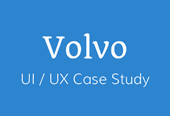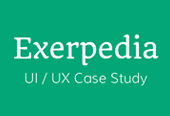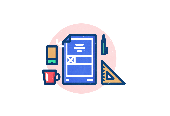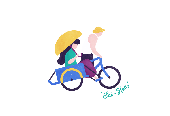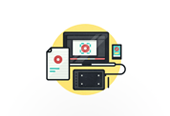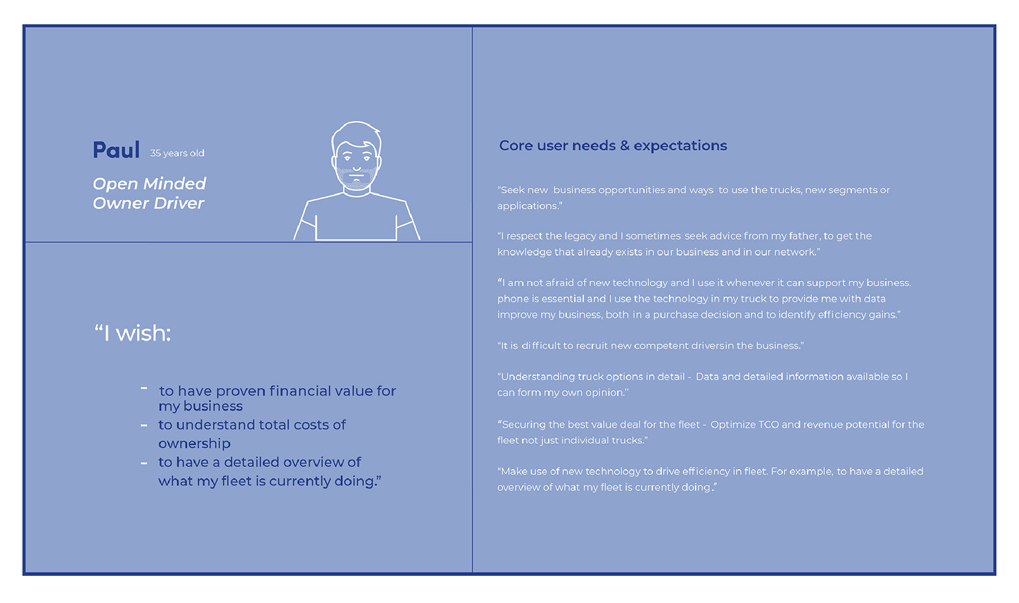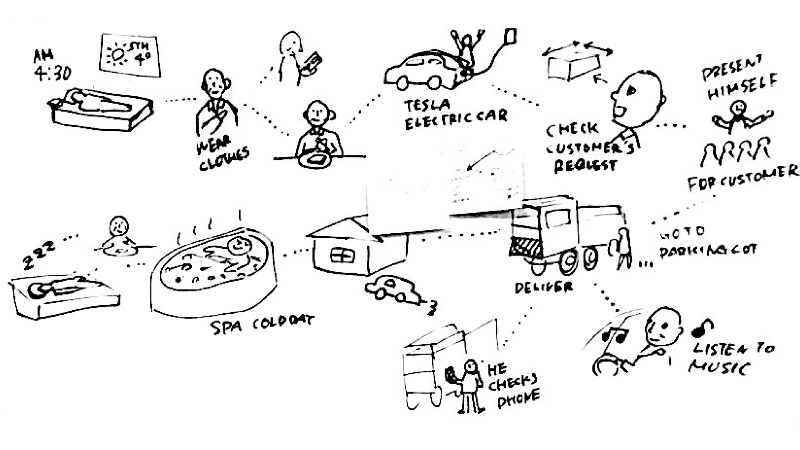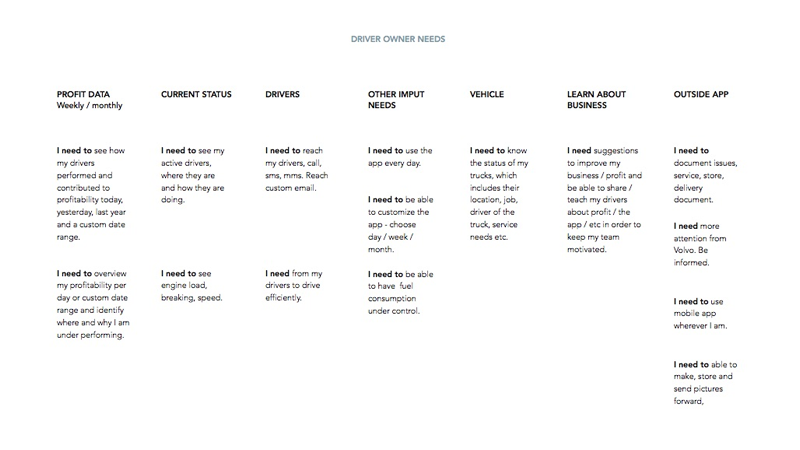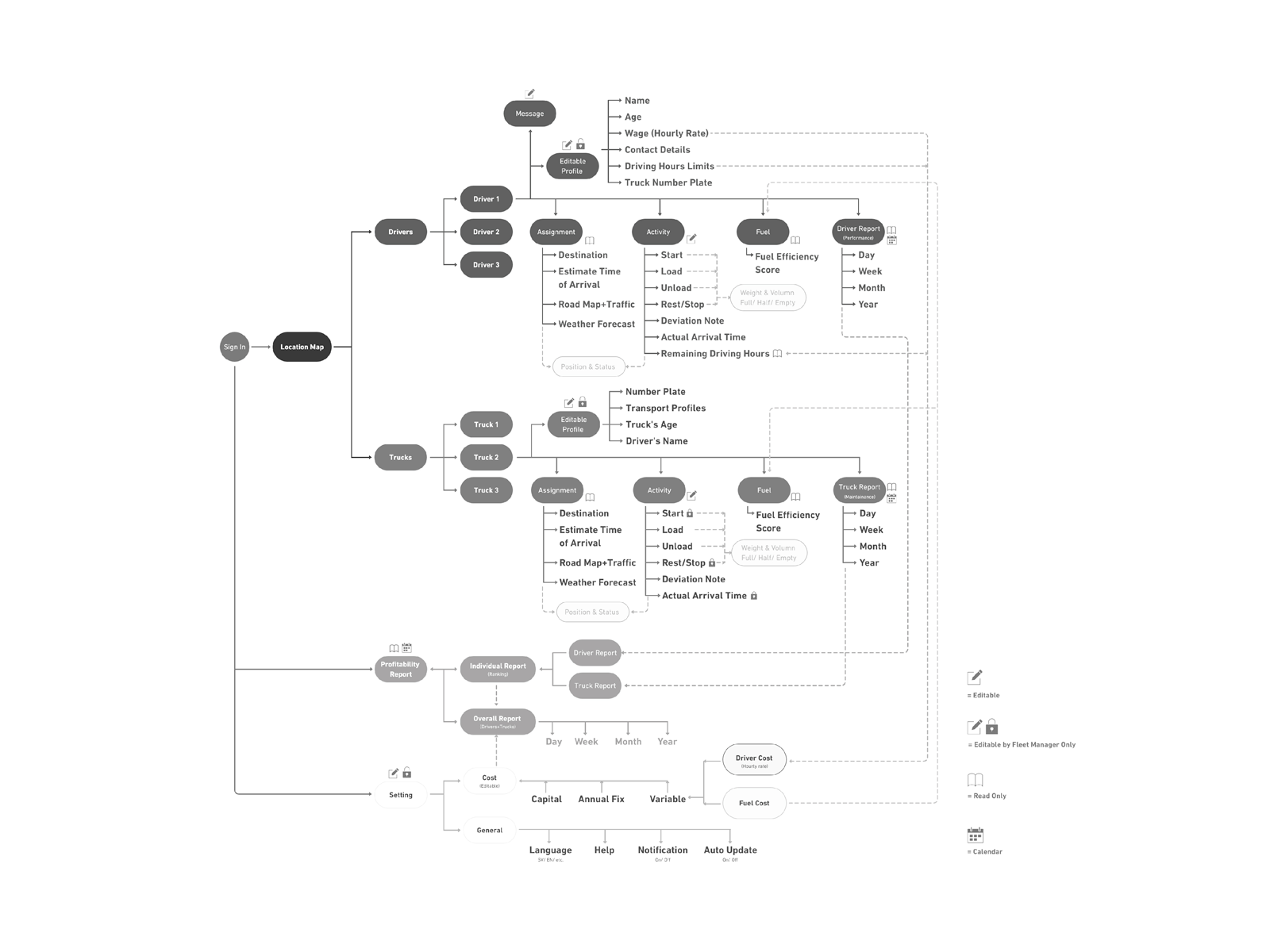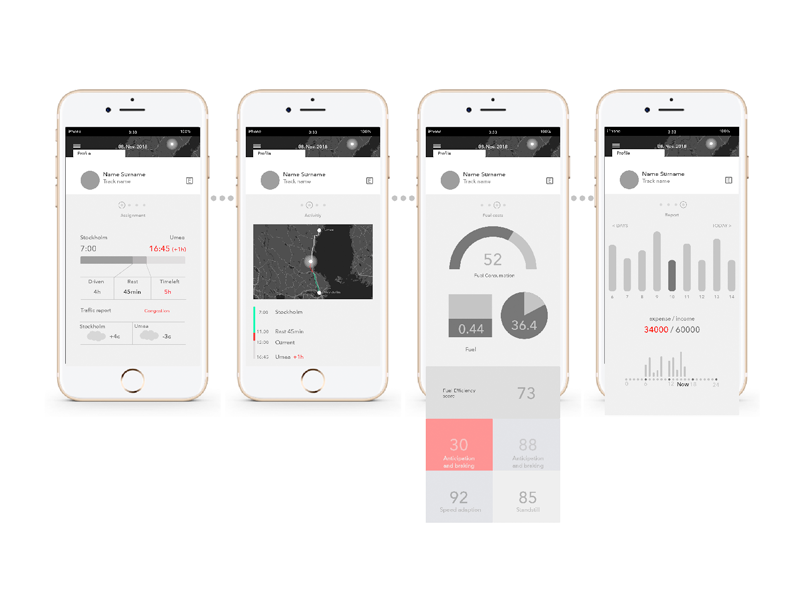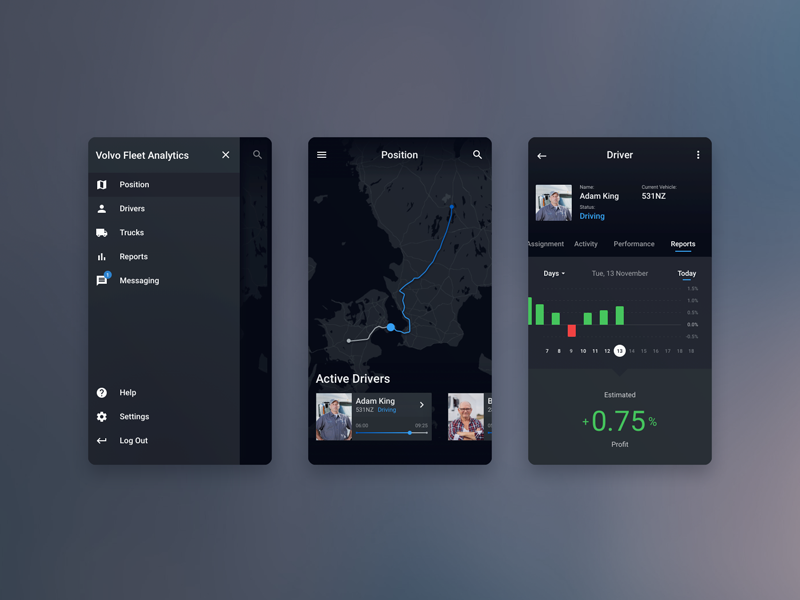Volvo Fleet Analytics
Track, Analyse and Manage Your Fleet, on the Go!
Client: Volvo Trucks
Role: PM + UI / UX Lead
Time: 4 Weeks
Team: 7 People
The Background
Context
This project was completed as part of my studies at Hyper Island. The school, and it's learning modules, focus around providing students with real clients and real design problems.
For our UX module me and my team received Volvo Trucks as our client. We were a team of 7 and over the course of 4 weeks we would be working together to tackle the brief outlined by Volvo.
My Goal
My personal learning goal during this project was less focused on the outcome but more on the process. One of my major goals has been to develop my co-creation, teambuilding and leadership skills.
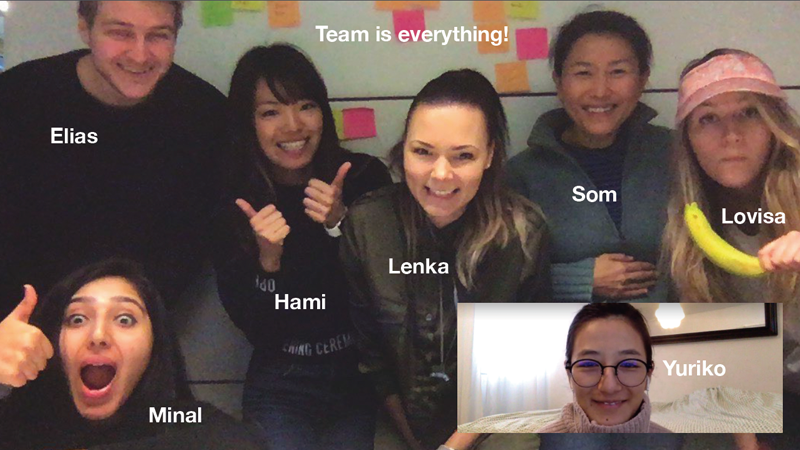

My Role
To fulfil my learning goals of developing my leadership skills, I took on the project manager (PM) role for the first 2 weeks of the project. My role was to have a big picture overview of the project and to be able to answer the questions: What are we doing? When are we doing it? And why?
Following the first two weeks, as we rotated the PM role within the team, I would take up the position of UI/UX lead. This meant my role was to suggest appropriate methods to move forward and facilitate the team through various UI/UX design exercises (from ideation to prototyping).
The Client
Volvo provides their truck clients with access to advanced telematics data gathered from various sensors built into each truck. This data is accessible through various apps to monitor the maintenance status of trucks, record driver's activities, fuel use and cargo.
Using a simple formula the owner of the truck can calculate an estimated profit / loss for each driver per transport mission. Volvo Asked us to help them discover a way to incorporate this calculation into their existing application offering.
The Problem
How might we help owner drivers quickly discover, analyse and understand data related to current and past driver's performance, activities and their profitability.
The Solution
Volvo Fleet Analytics!
A tool to answer two questions: How are my drivers doing right now? And how did they perform in the past day? Week? Month?
Utilizing the the telematics systems provided by Volvo, the fleet owner is able to monitor live data relating to each one of their drivers and trucks. This data is recorded and processed to provide profitability and history reports on drivers location and performance.
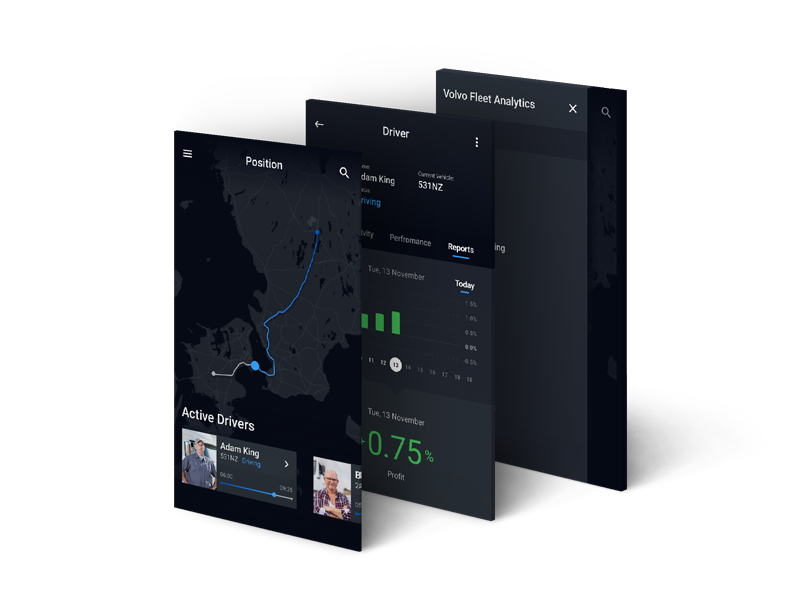

The Process
1. Understand
Team Building
Teamwork makes the dream work! So before anything else the first thing we did was get together as a team and get to know one another. Building a strong foundation of trust and a shared team culture is essential for the long term health of the project.
To do this we spent an entire afternoon producing a 'point of departure' document. The purpose is to have an open discussion of each team members strengths, weaknesses, needs and goals. By being honest about the good and the bad, what we need and expect, we can get to know each other quickly.
Finally we bring everything together and produce a set of rules and align behind a team goal. Once this is done we can kick off the project.
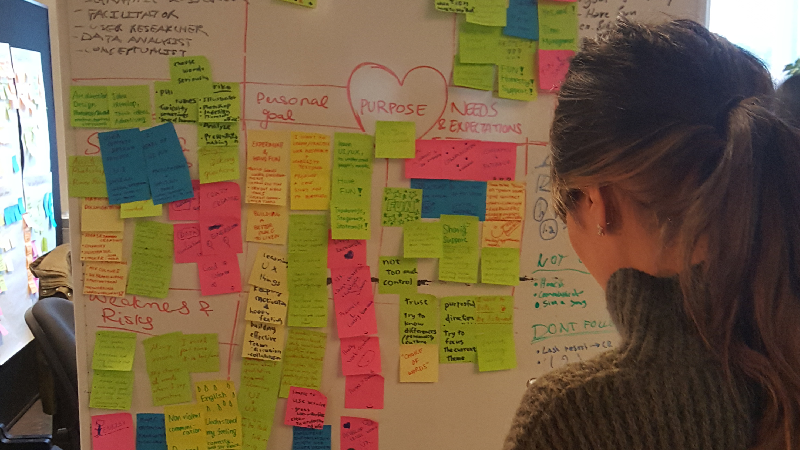

Planning
With the team estabilshed, and a goal in mind, we can begin to plan our process. As the project manager I took the responsibility to introduce my team to the 'double diamond' design process model. Using a modified version of the 'double diamond' as a base, we layed out a loose plan on what sort of activities we would engage with at each stage. Based on this we produced a calendar with weekly goals in mind.
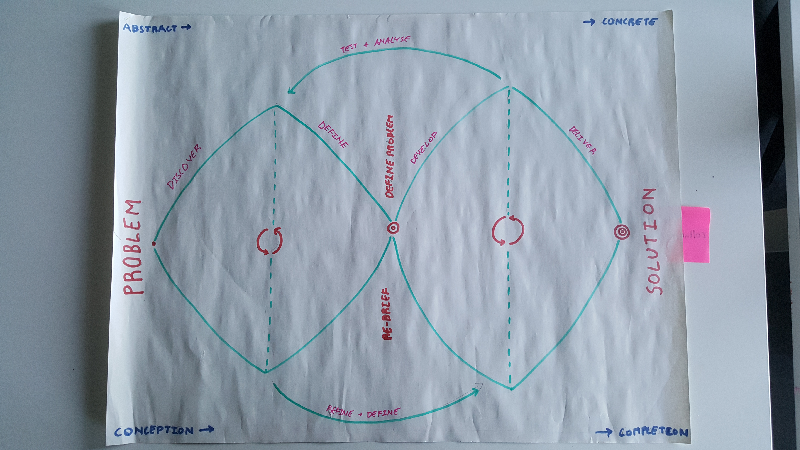

Knowledge Check
With an initial goal and a plan of attack, we can finally begin dissecting the problem at hand. To set ourselves up for an effective discovery phase, we completed a 'knowledge check'. Combining our knowledge we set out to answer: What do we know? What do we Assume? And, what do we not know?
We completed the exercise and shared our thoughts as a team. It became clear that there was a lot for us to research and that we had a fairly complex problem in front of us.
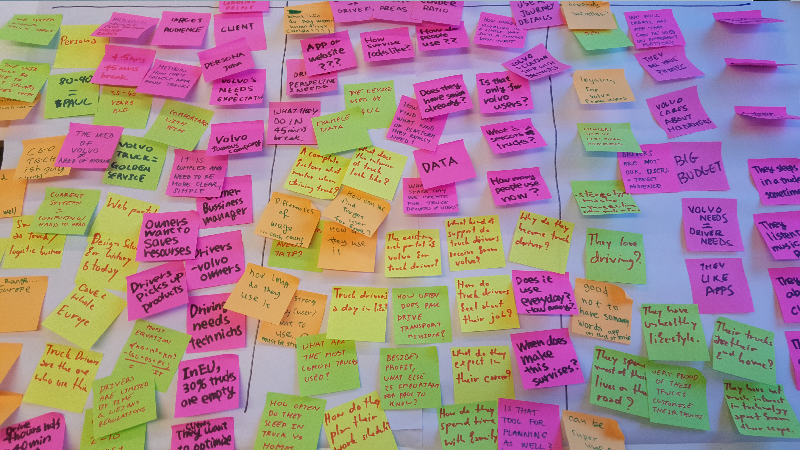

2. Discover
The Goal
Our goal for the discovery phase of the project was to increase our understanding of the context of the problem, identify the artefacts within that context, and empathise with the actors involved.
To do this we split our team into these three research teams: Actors, Artefacts, and Context.
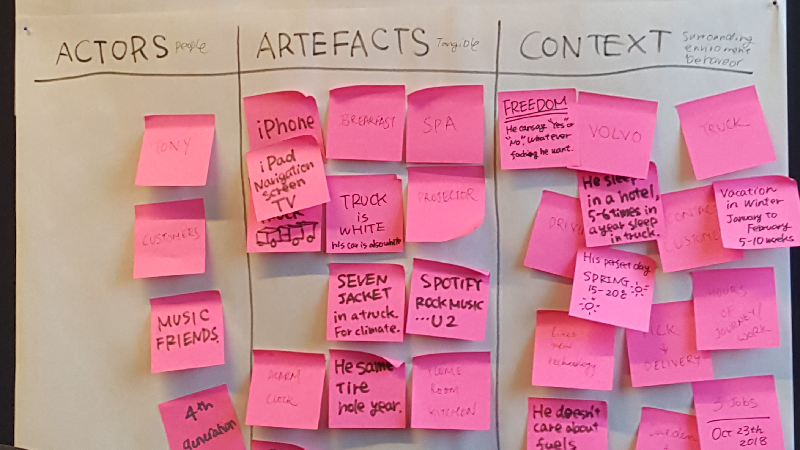

Actors
At the beginning of the project we were provided with a target persona developed by Volvo for this project. 'Paul' the open minded owner driver, is looking for ways to use technology to enhance his business. He is 35 years old and comfortable with adopting new tools and technologies into his company.
To empathise with our users we employed various user research techniques to try and understand the users needs, pain points and interactions with Volvos application offering.
To begin we engaged in improv games, where we as a team acted out scenarios based on the brief and our assumptions. This was a new experience for me and it turned out to be a great way to begin to understand the context of the problem. When you act out a scenario you place yourself into the mindset of the persona and are able to empathise and identify needs far more effectively as opposed to doing this as a mental exercise.
These improv games also proved to be a great way to build trust and comfort within the team. We had a blast acting out different scenarios, as well as building our understanding of the context of the problem.
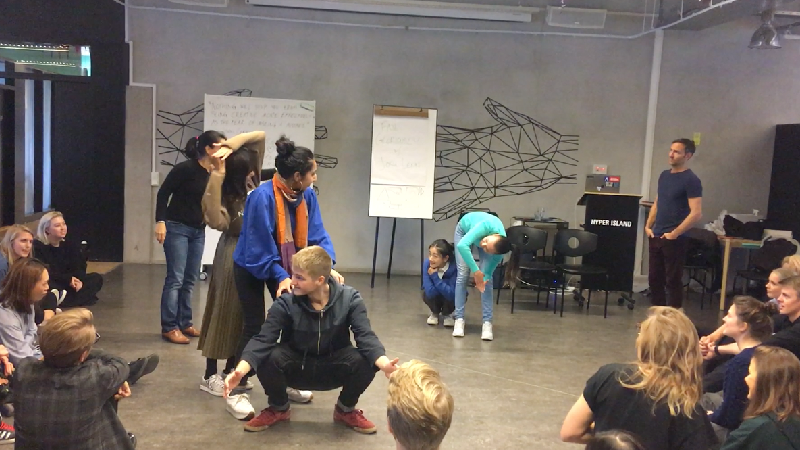

Now that we were beginning to have a better idea of what it is we are trying to solve, our next step was to get in touch with real people within our target group. It proved to be a challenge to find these people. Our persona played a very specific role within the long haul trucking industry. As 'driver owners' not only did they own a fleet of trucks, they also would drive their own truck to complete transport missions.
However we managed to get in touch with two such owner drivers. One who had a small fleet of his own, and one who was a solo entrepreneur. Over the phone we set up and completed semi-structured interviews. This allowed the conversation to flow naturally, but also allowed us to get much needed answers to pre-determined questions.
By talking with these two potential users we were able to increase our understanding of the daily lives and needs. We developed user journey maps based on their daily lives, and outlined a set of key needs brought up by the interviewees.
Artefacts
We defined artefacts as tangible objects that our target users interact with. We outlined a few of these during our knowledge check, and using desktop research did our best to try and understand how they relate to the user and the problem.
We looked at competing apps and how they attempt to solve similar problems. From these we could analyse what works and what doesn't work. What can we take from these solutions and what can we improve upon.
We discovered that most competitors are providing much of the same offering as volvo, but none are currently providing profitability reports. This would provide Volvo with a unique selling point moving towards the future.
Context
If artefacts are the props, and the actors are … the actors … then the context is the stage. To understand the context we did desktop research into the long haul trucking industry. We looked at trends moving towards the future, as well as current statistics on the state of the industry.
We discovered that there is a serious need for new truck drivers in the comming years. As many older drivers are reaching retirement age, and there is little interest among young people to get into the industry, a serious skill gap is forming. This was backed up by our interviews. One of our interviewees described he has trouble motivating his drivers to drive ecologically, as if there is too much pressure from management, it's easy for drivers to jump ship.
Key Takeaways
While we learned a lot about the trucking industry as a whole, and the upcoming problems that the industry will face, our key takeaway regarding our design problem was that no competitors are currently providing profitability reporting in their existing offering.
From our interviews we discovered that owner drivers want to not only know when and where their drivers are, and how they are driving, but also how effective are the routes they are choosing.
These findings validate the brief provided by Volvo. There is a great opportunity to capitalise on these needs by providing Volvo customers more value in their fleet analysis software. We can do this by introducing profitability reporting along with the existing fleet management capabilities.
3. Define
The Goal
Now that we had gathered a lot of information regarding our design problem, it was time to synthesise all the important information and get rid of the noise. The goal is to define what we learned in order to re-frame the problem.
Needs
By revisiting the recordings of our interviews, we developed user journey maps based on their day to day activities. From this analysis, combined with some informed assumptions, we outlined the key needs that our target audience has. By answering as many "I need to..." questions from the perspective of our users we were able to generate a large amount of problems to tackle. We then sorted these needs into categories and cut the unnecessary ones out.
Frame the Problem
With our research and needs in mind we revisited our problem statement. We did this by asking ourselves: What is the problem we are trying to solve? What is our desired outcome? Does our problem statement allow for a variety of solutions? And does it take into account the context of the problem?
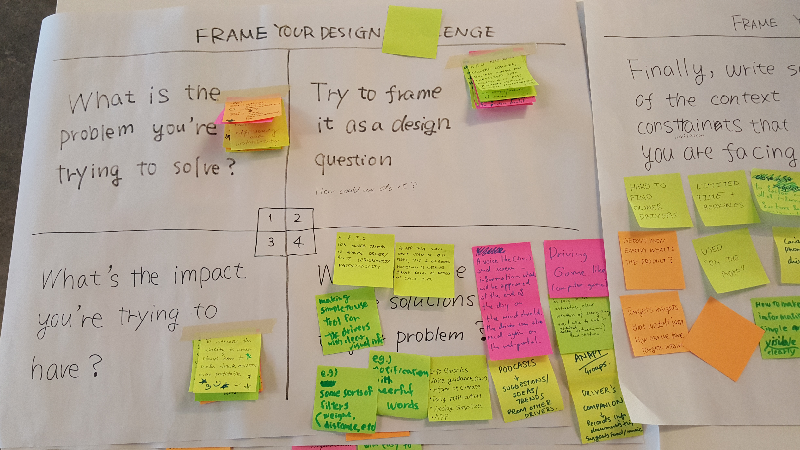

Key Takeaways
With our improved understanding of our users needs, we now had a solid problem statement to tackle during the development phase. This problem statement helped our team stay aligned and focus our energy within the scope of the problem.
4. Develop
The goal
With our re-defined problem statement and clarified user needs in hand, it was time to begin developing potential solutions. The goal for our first round of development was to produce a tangible, testable, initial solution. To do this we followed the process outlined by Googles "3 day product design sprint".
The Sprint
This was the first time I tried out any version of a design sprint, it was a fun and rewarding experience to facilitate my team through the 3 day sprint.
To refresh our memories and get on the same page we began by sharing our understandings gathered so far using 'lighting talks'. After our sharing session we brainstormed a variety of 'how might we?' (H.M.W) questions related to the problem.
With these questions in mind we produced a user journey map of how 'paul' (our persona) would discover, learn, and use our solution. Once established we mapped out our H.M.W questions on the map. As the majority landed around the same portion, it was clear what our target for the sprint would be.
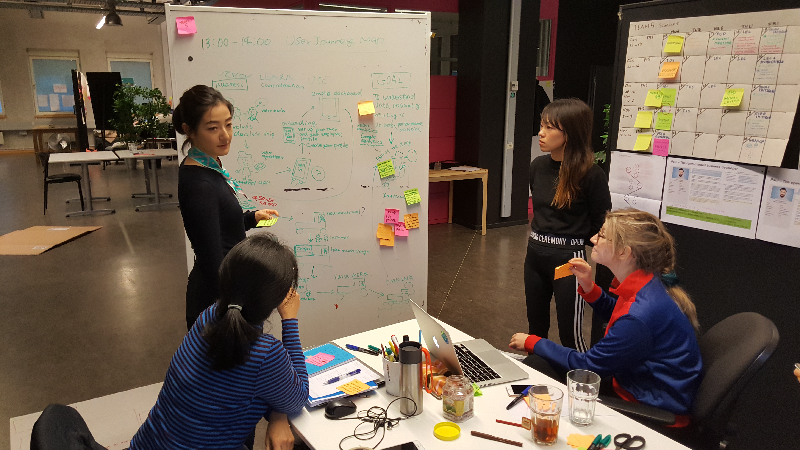

With our target outlined we began to ideate potetial solutions. To generate lots of ideas we used 'crazy 8s', which meant sketching 8 ideas in 8 minutes. Once completed we gathered our ideas together, discussed each one and voted on the things we liked.
With the first round of ideation complete, we went for a second iteration. This time bringing the inspiration of each others ideas with us. For this second iteration we focused on developing one idea as opposed to 8. Again we brought our ideas together and discussed what worked and what didn't.
We ended up with two competing solutions and decided to develop both for the time being.
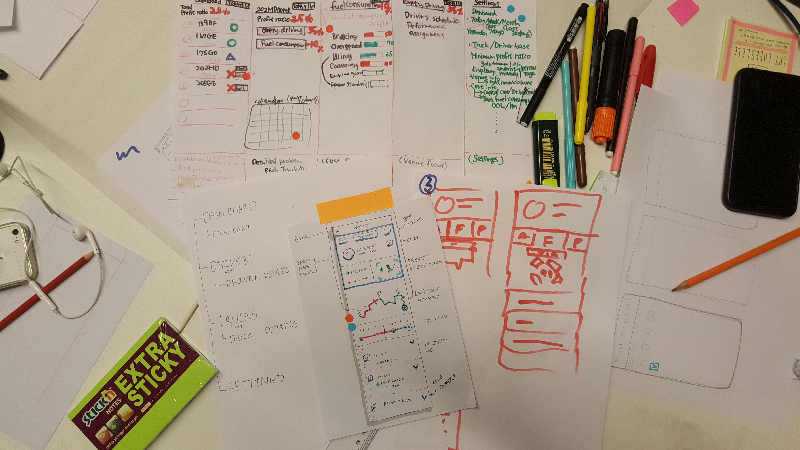

Key Takeaways
For my first attempt at a sprint I can see how it's an effective methodology to reaching initial solutions in a short period of time. The framework provided by Google helped us work efficiently and produce lots of ideas in a short amount of time. We took the ideas generated through the sprint and developed paper prototypes to be used for testing and validation.
5. Test
The Goal
The goal was to verify our assumptions and test the overall usability of our solution using the paper prototype developed during the sprint. However due to lack of access to our target audience we were only able to conduct a preliminary usability test with those around us.
The Test
I conducted a usability test using a convenience sample of 3 people. I explained the general premis of the app and asked my participants to navigate through the prototype while thinking aloud. The paper prototype itself seemed to produce some confusion, however each participant was able to reach the goal outlined in the test. The lack of labeling and poor legibility of the hand drawn screens produced the most confusion and friction.
A secondary goal of the prototype was to align with our client and receive their informed feedback on the direction we had taken. While we had initially struggled to see how our two concepts could be merged into one, when presented to our client the outside perspective made it clear that they were compatible.
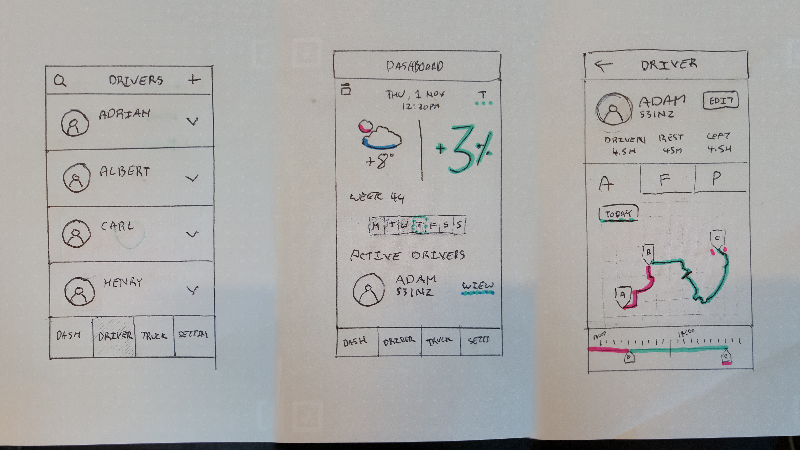

Key Takeaways
While we were not able to test our prototype with our target audience we were able to receive valuable feedback from our initial testing. Our meeting with the client gave us confidence and clear direction for combining our ideas and finalising our solution.
6. Deliver
The Goal
Now that we had developed our initial solution to our design problem, tested it's usability and received feedback from our client it was time to finalise and deliver. The goal as outlined by the brief was to develop suggested application structure, suggested application wireframes, and suggested graphic design.
Application Structure
We took a step back after the testing to re-evaluate what we had done until this point. We discussed and split our roles to make sure we deliver on time. Our first task was to develop the suggested application structure. Combining what we believed to be the strengths of the existing solution with our design ideas we generated an initial navigation structure for our application.
Wire Frames
As time was a factor we outlined the core area of the suggested structure to develop into wireframes. These were the key screens that introduce the profitability reporting to the existing offering and are primarily solving our design problem.
Suggested Graphic Design
I was in charge of producing the final suggested graphic design. As the visual design of the existing app was undeniably out of date I wanted to bring a contemporary look and feel to the design. I opted to go for a dark theme to bring the content to the front and to reduce strain on the eyes of a potentially weary owner driver checking in late at night. Using legible typography and clean iconography I believe I was successful at giving the new solution a facelift when compared to it's previous iteration.
The Conclusion
After a packed project full of valuable learnings and new experiences everything came together for our final presentation for the client. We presented two concepts, one of which was outlined in this write up and another developed simultaneously by some of my team members. We left the client satisfied with our end product, and while we were not able to test our solution with real users, we can be proud of a job well done.
I personally set out to improve my team building, co-working, and leadership skills. To challenge my self I volunteered to take on the project manager role early on. This meant I had a lot of responsibility to get the project up and running. I took it uppon my self to introduce my team to how I would approach the problem at hand and with their trust we built our project plan arround that methodology.
"I think this is really good, I like the result alot!"
- Client
I believe we came very close to developing a realisable solution to our problem given the time and resources that we had. We did an excellent job at coming together to tackle this project while allowing each other the room to pursue our individual learning goals. We terminated the team and I recieved overwhelmingly positive feedback from my team members.
I learned so much from my team members and have much to thank them for, especially for their trust and patience with me. I now feel comfortable running a team through such a project again and I'm happy that we were able to achieve what we did.
Thank you for reading!
